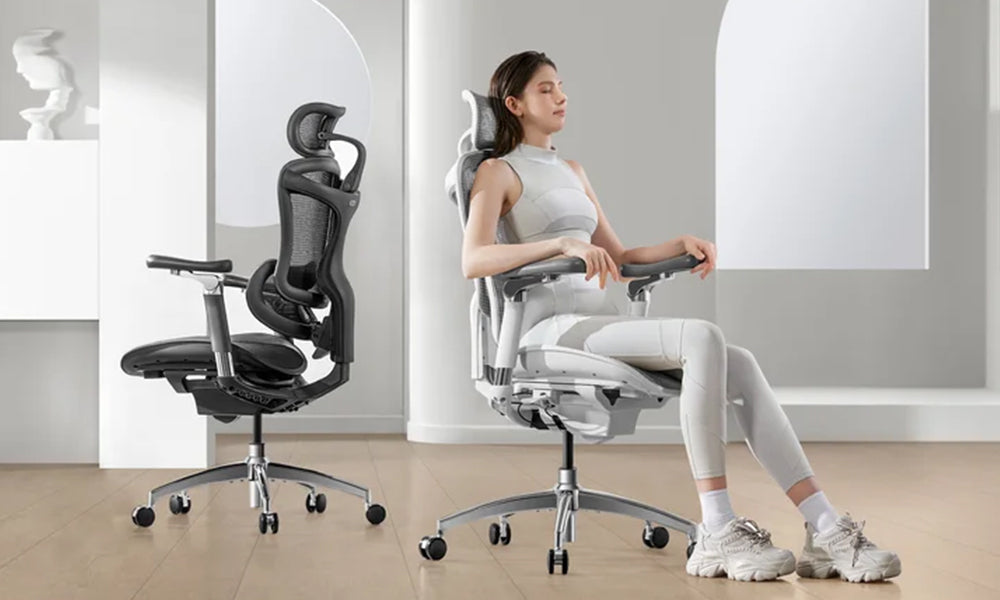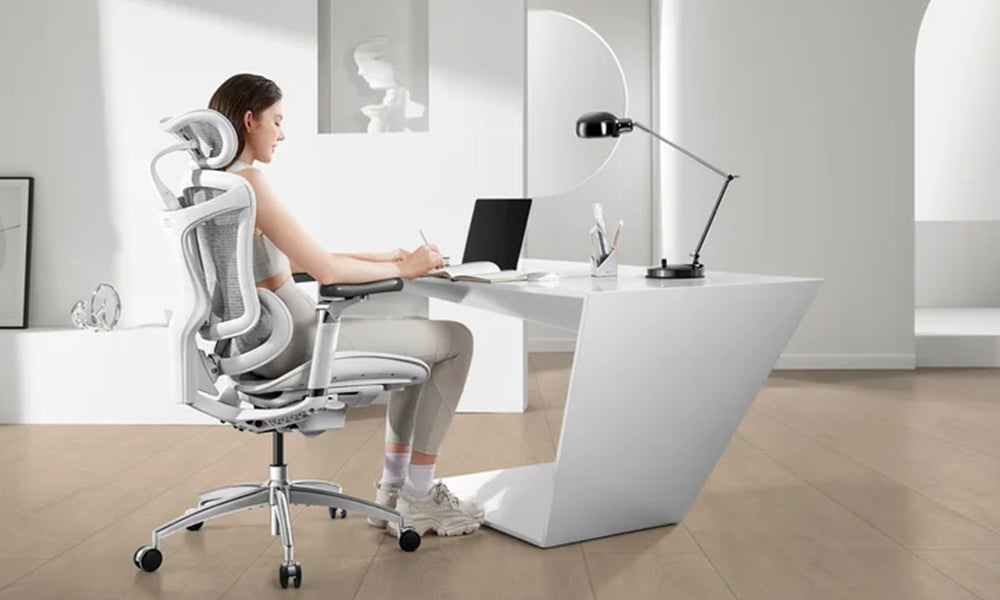In the ever-evolving landscape of office furniture, ergonomic chairs have emerged as a crucial component in promoting health, comfort, and productivity in the workplace. As more people spend extended hours seated at desks, the importance of ergonomic design has become increasingly evident. The Sihoo Doro S300 stands out as a prime example of innovative ergonomic chair design, boasting features such as the Anti-Gravity Mechanism, customizable lumbar support, and an integrated headrest. In this article, we'll explore the significance of ergonomic chairs, the evolution of their design, and whether features like those found in the Sihoo Doro S300 could become standard in the future.
The Rise of Ergonomic Chairs
The concept of ergonomic chairs traces its roots back to the mid-19th century when Charles Darwin's cousin, Sir Francis Galton, introduced the idea of designing workspaces to accommodate human physiology and behavior. However, it wasn't until the latter half of the 20th century that ergonomic principles gained widespread recognition and adoption in office furniture design.
Ergonomic chairs are specifically engineered to provide optimal support and comfort, thereby reducing the risk of musculoskeletal disorders and promoting better posture. Traditional office chairs often lack sufficient lumbar support, leading to discomfort, fatigue, and potential long-term health issues. As a result, ergonomic chairs have become increasingly popular in workplaces worldwide, with employers recognizing the importance of investing in employee well-being.
The Evolution of Ergonomic Chair Design
Over the years, ergonomic chair design has undergone significant evolution, driven by advancements in technology, materials science, and a deeper understanding of human anatomy and biomechanics. Early ergonomic chairs focused primarily on basic adjustments such as seat height and tilt angle. However, as research into ergonomics progressed, designers began incorporating more sophisticated features to enhance comfort and support.
Features such as adjustable armrests, lumbar support, and seat depth became standard in high-quality ergonomic chairs. These adjustments allowed users to customize their seating experience based on their unique body dimensions and preferences. Additionally, ergonomic chairs started to incorporate breathable materials and advanced cushioning to improve comfort during prolonged periods of sitting.
Introducing the Sihoo Doro S300
The Sihoo Doro S300 represents the pinnacle of ergonomic chair design, incorporating cutting-edge features aimed at providing unparalleled comfort and support. At the heart of the S300 is the revolutionary Anti-Gravity Mechanism, crafted with aerospace-grade glass fiber. This mechanism allows users to experience a weightless recline, relieving pressure on the spine and promoting relaxation during extended periods of sitting.
In addition to its Anti-Gravity Mechanism, the Sihoo Doro S300 offers coordinated support for the entire body. Customizable dual dynamic lumbar support ensures that users maintain proper spinal alignment, reducing the risk of lower back pain and fatigue. Furthermore, the chair's spacious integrated headrest provides additional support for the neck and shoulders, promoting a more ergonomic sitting posture.
The Future of Ergonomic Chairs
As the demand for ergonomic chairs continues to grow, the question arises: will features like those found in the Sihoo Doro S300 become standard in the future? While it's impossible to predict with certainty, several factors suggest that the trend toward more advanced ergonomic designs is likely to continue.
Firstly, there is a growing awareness of the importance of ergonomics in promoting health and well-being in the workplace. Employers are increasingly prioritizing employee comfort and productivity, recognizing that investing in ergonomic furniture can yield long-term benefits in terms of reduced absenteeism and improved job satisfaction.
Secondly, advancements in materials science and manufacturing technologies are making it easier for designers to incorporate innovative features into ergonomic chairs without significantly increasing costs. As materials become lighter, stronger, and more durable, manufacturers can experiment with new designs and mechanisms to enhance comfort and functionality.
Finally, the rise of remote work has accelerated the demand for ergonomic home office furniture. With more people working from home, there is a greater need for ergonomic chairs that can provide the same level of comfort and support as traditional office chairs. Features like the Anti-Gravity Mechanism and customizable lumbar support found in the Sihoo Doro S300 could become increasingly desirable for remote workers seeking to create ergonomic work environments.
Conclusion
The Sihoo Doro S300 exemplifies the cutting edge of ergonomic chair design, offering features that redefine the standard for comfort and support in the workplace. While it remains to be seen whether features like the Anti-Gravity Mechanism will become standard in the future, the growing awareness of ergonomics and advancements in materials science suggest that the trend toward more advanced ergonomic designs is likely to continue. As workplaces evolve and remote work becomes more prevalent, the demand for ergonomic chairs that prioritize comfort and productivity will only continue to grow. In the end, the future of ergonomic chairs may indeed be characterized by features like those found in the Sihoo Doro S300, as designers strive to create seating solutions that optimize health, comfort, and well-being for users around the world.



